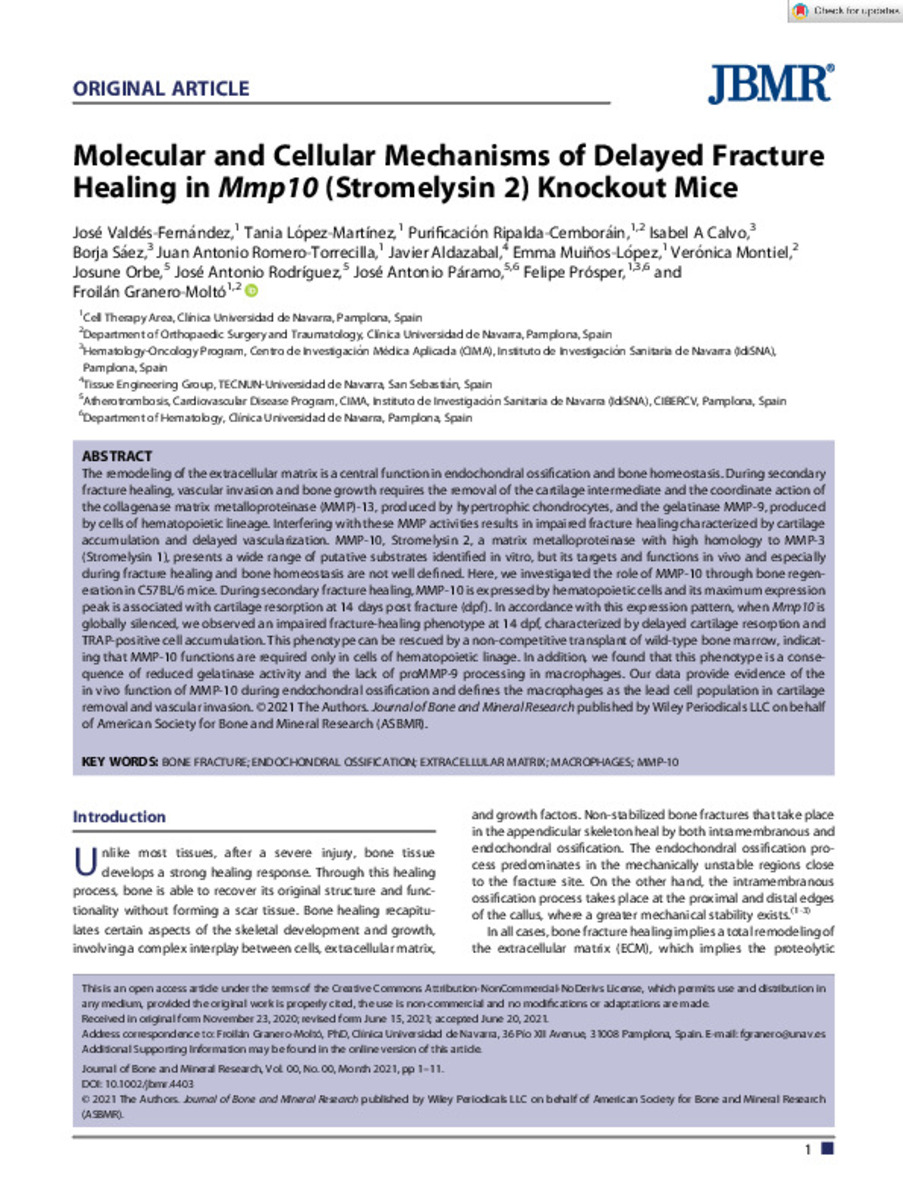Molecular and Cellular Mechanisms of Delayed Fracture Healing in Mmp10 (Stromelysin 2) Knockout Mice
Palabras clave :
Bone fracture
Endochondral ossification
Extracellular matrix
Macrophages
MMP-10
Fecha de publicación :
2021
Cita:
Valdés-Fernández, J. (José); Lopez, T. (Tania); Ripalda, P. (P.); et al. "Molecular and Cellular Mechanisms of Delayed Fracture Healing in Mmp10 (Stromelysin 2) Knockout Mice". J Bone Miner Res. 36 (11), 2021, 2203 - 2213
Aparece en las colecciones:
Estadísticas e impacto
0 citas en

0 citas en

Los ítems de Dadun están protegidos por copyright, con todos los derechos reservados, a menos que se indique lo contrario.








